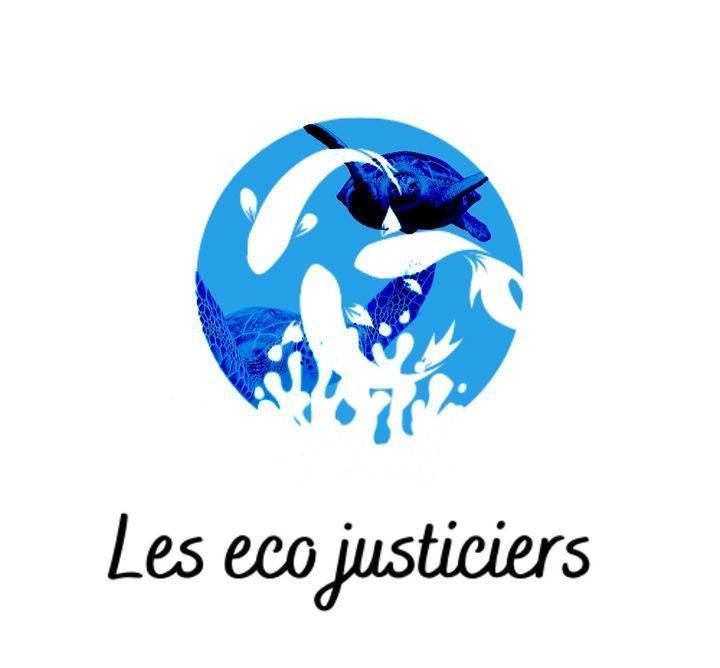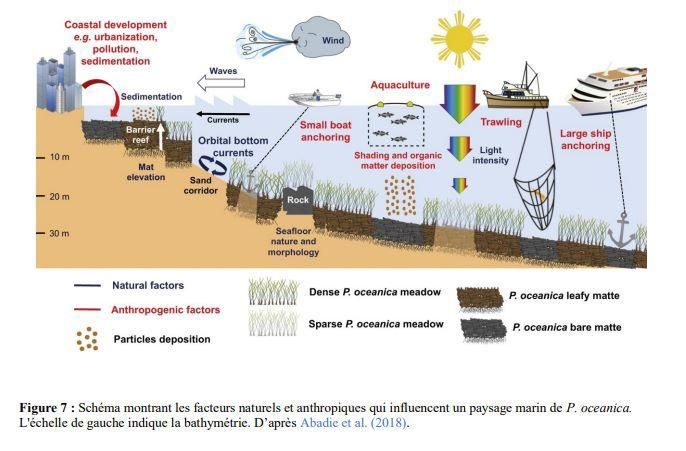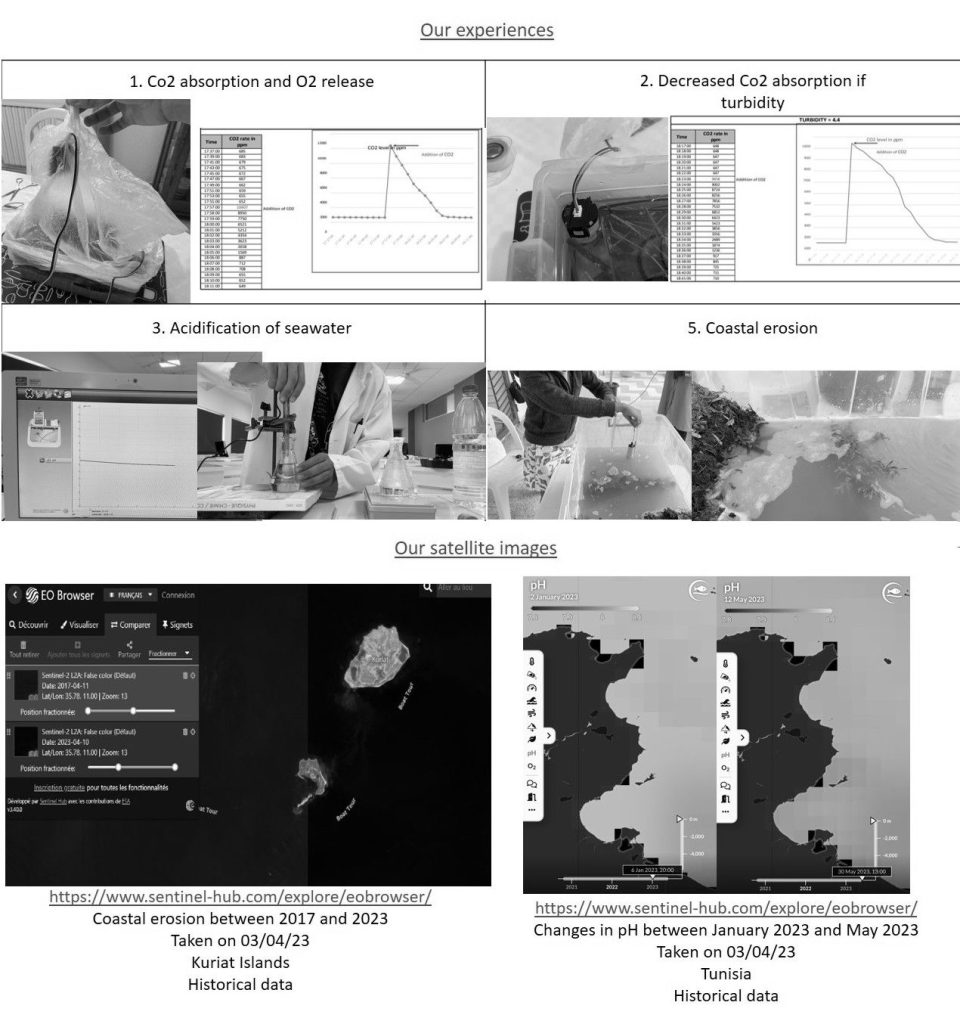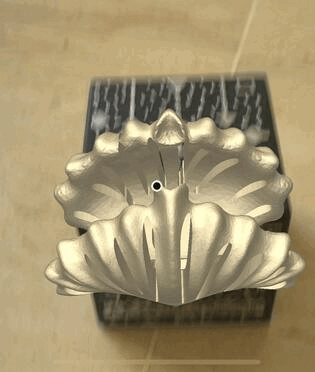Climate Detectives Projects 2022-2023
Project title: Are the Posidonia, lifeline of the Mediterranean in danger?
Team: Les eco-justiciers
Collège Philippe Seguin Sousse Tunisia 8 Student’s age: 14-15 years old
what are the dangers that threaten the Posidonia meadows in the Mediterranean, especially in Tunisia and around the Kuriat islands.
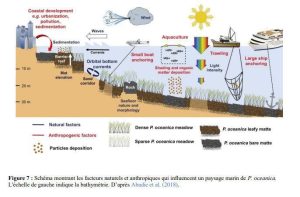
Our problem consisted in studying which were the dangers which threaten the posidonia meadows in the Mediterranean, in particular in Tunisia and around the Kuriat islands.
We first did some research on the species of Posidonia present in the Mediterranean: Posidonia oceanica. We learned how essential these aquatic plants are: they are not only a great carbon sink, but they are an essential link in the food chain and play a fundamental role in biodiversity.
We then listed the dangers that threaten them and that are of anthropic and climatic nature.
The variations of the rate of CO2 on earth, of the temperature, of the acidification and of the sea level in the course of time in our region, could be observed thanks to the E/O browser and the Copernicus site.
We first conducted experiments to demonstrate the ability of seagrass to absorb large amounts of CO2 and to release O2, and their insulating capacity.
Three other experiments consisted in showing the relationships between CO2 levels in the air / water acidification, and temperature increase / water expansion.
Excessive urbanization and coastal development have led to the disappearance of the
dead Posidonia beds that used to wash up on our beaches.
An aquaculture site is located near the Kuriat islands. However, these farms disturb the biodiversity and increase the turbidity of the water.
We have therefore developed two other experiments to study the influence of turbidity on seagrass and its ability to prevent soil erosion and preserve heat and moisture.
An interview with a researcher specialized in the study of posidonia, a boat trip to the Kuriat Islands with scuba diving, a survey among fishermen and a meeting with an association for the protection of the biodiversity of the Kuriat Islands allowed us to complete the first part of our study.
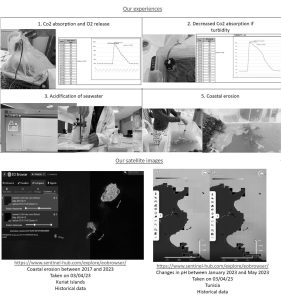
Our first two experiments allowed us to demonstrate that seagrasses are able to absorb large quantities of CO2 and to release O2. But if turbidity increases (aquaculture, human activities) this capacity decreases.
The experiment N°3 proved that an increase of CO2 (due to human activities) provoked the acidification of the water which is harmful for the Posidonia. Copernicus satellite images show an acidification of Tunisian waters between January 2 and May 30, 2023
The satellite images confirmed the decrease in the area of the Kuriat islands between 2017 and 2023 due to the rise in sea level Experiment No. 4 proved the increase in temperature on Earth induces a dilation of water and therefore a rise in sea level; deep seagrass beds are therefore impacted
The rise in temperature also leads to overgrazing due to invasive species as well as the establishment of other algae that compete with the Posidonia
The experiment N° 5 showed that the Posidonia banks played a stabilizing role of the beaches and that the sea grass in the water slowed down the marine currents, thus slowing down the erosion of the coast.
During an increase in turbidity (extreme weather events, boats, aquaculture …) particles are deposited on the leaves of Posidonia, thus affecting photosynthesis and the health of the meadows.
The experiment N° 6 showed the insulating role of the posidonia banks which allow to fight against the global warming. These banks are unfortunately removed from the beaches for aesthetic reasons or disappear because of the rarefaction of the meadows.
The survey of fishermen has finally allowed us to note that the anchors used are classic anchors that destroy the rhizomes by pulling them out.
We can thus conclude that man is the main responsible for the disappearance of the meadows. His influence can be direct or indirect by inducing climate change
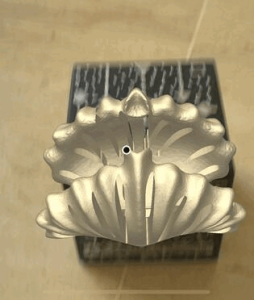
We are a group of 8 students and each one chose to work on a particular solution.
To fight against the uprooting of seagrass beds by anchors, one team imagined an anchor that would penetrate the ground by means of a screw thus reducing the impact on the ground to a minimum. The system would be activated by an acoustic signal (transmissible in the water). This signal would be perceived by a piezoelectric sensor that would trigger the rotation of a reduction motor. This one would drive in its turn a piston and the screw. The system would be powered by batteries rechargeable by solar panels.
Attempts to re-establish the seagrass beds have given some success but it is a hard work for the divers. Another team has therefore modelled a mixed system of planter and mat that would allow to implant cuttings more easily in the sand.
Anti-chalking reefs are the recommended solution to avoid the removal of large quantities of rhizomes by these boats when they dredge the bottom. A group has designed a model that meets the specifications of these reefs: size, shape, materials, maintenance, aesthetics …
A researcher specialized in the study of posidonia granted us a long interview. He regretted not having an application on his phone to enter the data observed during his observation of the sea grass beds. We have therefore developed such an application using AppInventor software, the data collected on the phone being then automatically sent to a Google Sheet to obtain usable statistics.
Finally, to raise awareness of the dangers to which the seagrass is subjected, we have created a website and modeled our solutions in virtual and augmented reality applications. All these realizations can be visualized on the website.
This problem concerns us all, so all Mediterranean countries must act together to preserve this magical plant.
https://sites.google.com/erlm.tn/lesco-justiciers/home
Projects are created by the teams and they take the full responsibility of the shared data.
← All projects


